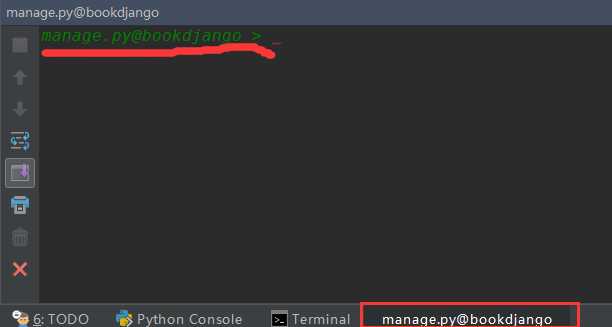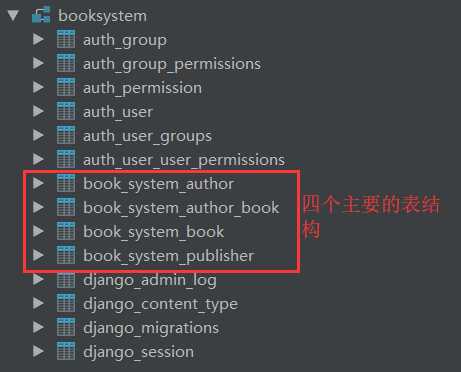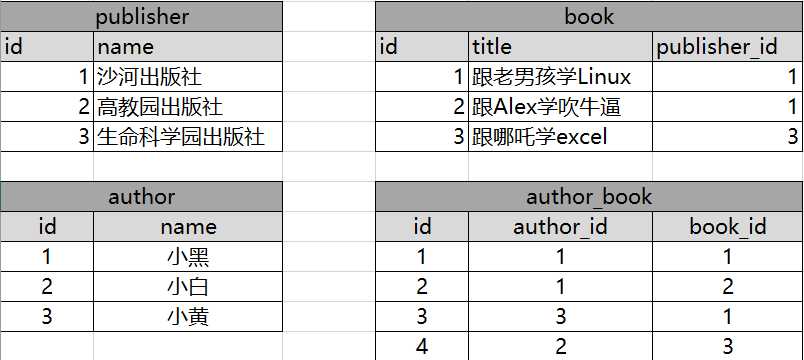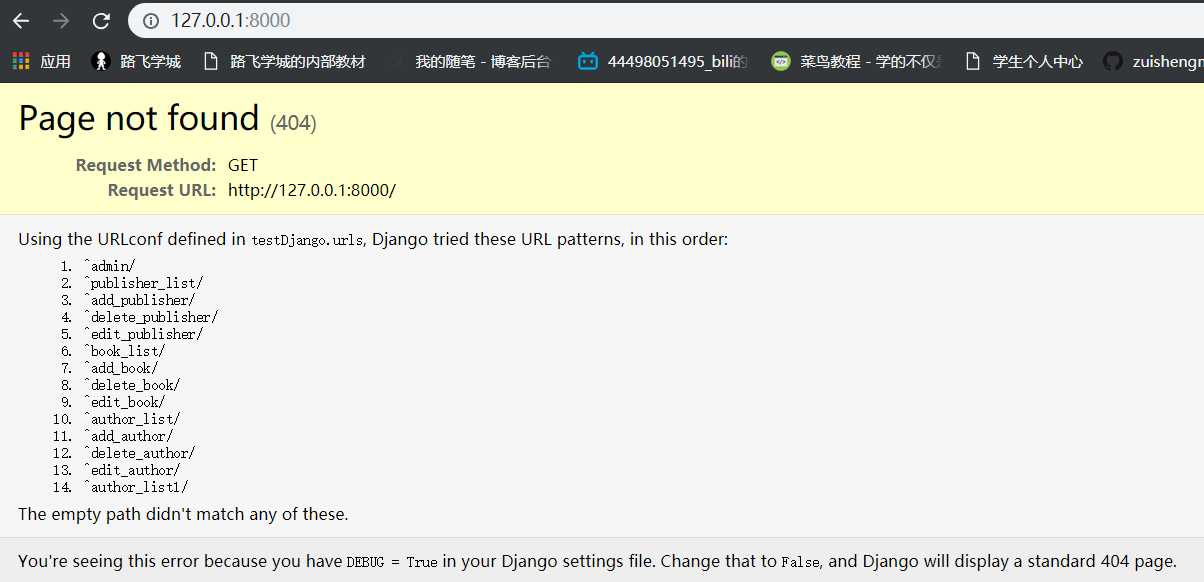在理解了Django框架的基本目录结构之后,为了更好的理解框架的流程,我们通过一个简易项目来实践一下,上面的目录可总结为:在templates文件夹中写前端页面,在settings中进行Django基本配置,在app下的models中写数据库相关,在url中写路径的对应关系,在views中写请求处理。
下面的项目就对这些文件一个个进行书写。
首先是各种配置的书写,一下都是在setting文件中的配置
1、理解settings文件中的BASE_DIR
BASE_DIR = os.path.dirname(os.path.dirname(os.path.abspath(__file__)))
这句话是获取项目的根路径,后面会用到。
2、在最初的时候先禁用csrf相关
MIDDLEWARE = [
‘django.middleware.security.SecurityMiddleware‘,
‘django.contrib.sessions.middleware.SessionMiddleware‘,
‘django.middleware.common.CommonMiddleware‘,
# ‘django.middleware.csrf.CsrfViewMiddleware‘, 在此禁用,一般在setting中的47行左右
‘django.contrib.auth.middleware.AuthenticationMiddleware‘,
‘django.contrib.messages.middleware.MessageMiddleware‘,
‘django.middleware.clickjacking.XFrameOptionsMiddleware‘,
]
3、确认APP是否注册
如果是在pycharm中创建的APP,一般都会在setting文件中自动注册,格式如下,如果没有请手动添加
INSTALLED_APPS = [
‘django.contrib.admin‘,
‘django.contrib.auth‘,
‘django.contrib.contenttypes‘,
‘django.contrib.sessions‘,
‘django.contrib.messages‘,
‘django.contrib.staticfiles‘,
‘book_system.apps.BookSystemConfig‘, # 这行是app的注册语句 book_system是app名
]
4、配置template文件夹的位置
TEMPLATES = [
{
‘BACKEND‘: ‘django.template.backends.django.DjangoTemplates‘,
‘DIRS‘: [os.path.join(BASE_DIR, ‘templates‘)] # 在此处配置,该DIRS是一个列表,可以配置多个
,
‘APP_DIRS‘: True,
‘OPTIONS‘: {
‘context_processors‘: [
‘django.template.context_processors.debug‘,
‘django.template.context_processors.request‘,
‘django.contrib.auth.context_processors.auth‘,
‘django.contrib.messages.context_processors.messages‘,
],
},
},
]
5、配置静态文件存放的位置(本篇可不用此设置)
# 静态文件保存目录的别名
STATIC_URL = ‘/static/‘
# 所有静态文件(css/js/图片)都放在我下面你配置的文件夹中,同样是列表,路径可以多个
STATICFILES_DIRS = [
os.path.join(BASE_DIR, "static"),
]
6、配置数据库相关
这里编者是用的mysql数据库,然后连接的数据库名字为‘booksystem‘,
第一步------在settings文件中写下如下配置,先将原DATABASE注释掉
DATABASES = {
‘default‘: {
‘ENGINE‘: ‘django.db.backends.mysql‘,
‘NAME‘: ‘booksystem‘, # 数据库的名字
‘HOST‘: ‘127.0.0.1‘,
‘PORT‘: 3306,
‘USER‘: ‘root‘, # mysql数据库的用户名
‘PASSWORD‘: ‘root‘, # 密码
}
}
第二步------告诉Django用pymysql代替默认的MySQLDB 连接MySQL数据库
在项目/__init__.py文件中,写下面两句:
import pymysql
# 告诉Django用pymysql来代替默认的MySQLdb
pymysql.install_as_MySQLdb()
恭喜你,至此你的配置环节已经结束
1、自己动手创建数据库
create database booksystem;
2、在创建的APP目录下的models.py下写下如下类,可在创建的空数据库中创建一系列的表
from django.db import models
# Create your models here.
# 出版社类
class Publisher(models.Model):
id = models.AutoField(primary_key=True) # 自增的ID主键
# 创建一个varchar(64)的唯一的不为空的字段
name = models.CharField(max_length=64, null=False, unique=True)
def __str__(self):
return "<Author object>: {}".format(self.name)
# 书类
class Book(models.Model):
id = models.AutoField(primary_key=True)
# 创建一个varchar(64)的唯一的不为空的字段
tittle = models.CharField(max_length=64, null=False, unique=True)
# 和出版者关联的外键字段
publisher = models.ForeignKey(to="Publisher") # 设置书籍连接到出版者的外键
# 数据库自动生成的外键会自动加上_id
def __str__(self):
return "<Author object>: {}".format(self.tittle)
# 作者类
class Author(models.Model):
id = models.AutoField(primary_key=True)
name = models.CharField(max_length=16, null=False, unique=True)
book = models.ManyToManyField(to="Book") # 创建作者表和书籍表多对多的关系
# 多对多的关系会在数据库中另创建一个新的对应关系表,只存放id的对应关系
def __str__(self):
return "<Author object>: {}".format(self.name)
3、使创建的表结构通过django命令映射到数据库
(1). python manage.py makemigrations --> 把models.py里面的更改记录到小本本(相应APP的migrations文件夹下)
(2). python manage.py migrate --> 把更改翻译成SQL语句,去数据库执行、
如果在pycharm环境中可以选择Tools-->Run manage.py task,然后会在下方弹出如下界面

在后面输入makemigration [appname]和migrate [appname]可以达到和如上一样的结果,执行完毕会在对应的数据库下创建各种表
3、自动创建的数据表在数据库中的结构如下

四个主要的表结构如下所示

到这,数据库结构的创建已经结束,向表中填写数据即可使用
1、数据库构建完成后,我们着手于对访问地址的解析,写url的路径关系

"""bookdjango URL Configuration The `urlpatterns` list routes URLs to views. For more information please see: https://docs.djangoproject.com/en/1.11/topics/http/urls/ Examples: Function views 1. Add an import: from my_app import views 2. Add a URL to urlpatterns: url(r‘^$‘, views.home, name=‘home‘) Class-based views 1. Add an import: from other_app.views import Home 2. Add a URL to urlpatterns: url(r‘^$‘, Home.as_view(), name=‘home‘) Including another URLconf 1. Import the include() function: from django.conf.urls import url, include 2. Add a URL to urlpatterns: url(r‘^blog/‘, include(‘blog.urls‘)) """ from django.conf.urls import url from django.contrib import admin from book_system import views urlpatterns = [ url(r‘^admin/‘, admin.site.urls), # 出版社的对应关系 url(r‘^publisher_list/‘, views.publisher_list), url(r‘^add_publisher/‘, views.add_publisher), url(r‘^delete_publisher/‘, views.delete_publisher), url(r‘^edit_publisher/‘, views.edit_publisher), # 书的对应关系 url(r‘^book_list/‘, views.book_list), url(r‘^add_book/‘, views.add_book), url(r‘^delete_book/‘, views.delete_book), url(r‘^edit_book/‘, views.edit_book), # 作者的对应关系 url(r‘^author_list/‘, views.author_list), url(r‘^add_author/‘, views.add_author), url(r‘^delete_author/‘, views.delete_author), url(r‘^edit_author/‘, views.edit_author), url(r‘^author_list1/‘, views.author_list1), ]
url函数的第一个参数为正则表达式,匹配接收的网址路径,匹配上了就交给后面第二个参数的函数处理
我们这里的函数写在了APP目录下的views模块里,也就是book_system中,根据需要把import那一行导入改成自己的APP
2、有了路径解析函数,下面写请求处理函数
在book_system下的views.py中写下路径处理函数

from django.shortcuts import render, redirect, HttpResponse from book_system import models # Create your views here. def publisher_list(request): # 去数据库查出所有的出版社,填充到html中,给用户界面 ret = models.Publisher.objects.all().order_by("id") return render(request, "publisher_list.html", {"publisher_list": ret}) def add_publisher(request): error_msg = "" if request.method == "POST": new_name = request.POST.get("publisher_name") if new_name: models.Publisher.objects.create(name=new_name) return redirect("/publisher_list/") else: error_msg = "出版社的名字不能为空" return render(request, "add_publisher.html", {"error": error_msg}) def delete_publisher(request): del_id = request.GET.get("id") if del_id: del_obj = models.Publisher.objects.get(id=del_id) # 这里的id相当于where语句 del_obj.delete() return redirect("/publisher_list/") else: return HttpResponse("您要删除的数据不存在") def edit_publisher(request): if request.method == "POST": publisher_id = request.POST.get("id") publisher_name = request.POST.get("publisher_name") publisher = models.Publisher.objects.get(id=publisher_id) publisher.name = publisher_name publisher.save() return redirect("/publisher_list/") else: edit_id = request.GET.get("id") print(models.Publisher.objects) edit_obj = models.Publisher.objects.get(id=edit_id) return render(request, "edit_publisher.html", {"edit_obj": edit_obj}) # book的相关试图操作 def book_list(request): # 去数据库查出所有的书籍,填充到html中,给用户界面 ret = models.Book.objects.all().order_by("id") return render(request, "book_list.html", {"book_list": ret}) def add_book(request): error_msg = "" ret = models.Publisher.objects.all() if request.method == "POST": new_name = request.POST.get("book_name") new_publisher_id = request.POST.get("publisher") if new_name: models.Book.objects.create(tittle=new_name, publisher_id=new_publisher_id) return redirect("/book_list/") else: error_msg = "书本的名字不能为空" return render(request, "add_book.html", { "error": error_msg, "publisher_list": ret }) def delete_book(request): del_id = request.GET.get("id") if del_id: del_obj = models.Book.objects.get(id=del_id) # 这里的id相当于where语句 del_obj.delete() return redirect("/book_list/") else: return HttpResponse("您要删除的数据不存在") def edit_book(request): ret = models.Publisher.objects.all() if request.method == "POST": book_id = request.POST.get("id") book_tittle = request.POST.get("book_tittle") book_publisher_id = request.POST.get("publisher") book = models.Book.objects.get(id=book_id) book.tittle = book_tittle book.publisher_id = book_publisher_id book.save() return redirect("/book_list/") else: edit_id = request.GET.get("id") print(models.Book.objects) edit_obj = models.Book.objects.get(id=edit_id) return render(request, "edit_book.html", { "edit_obj": edit_obj, "publisher_list": ret }) def author_list(request): all_author = models.Author.objects.all() return render(request, "author_list.html", {"author_list": all_author}) def add_author(request): error_msg = "" ret = models.Book.objects.all() if request.method == "POST": new_name = request.POST.get("author_name") new_books_id = request.POST.getlist("books") if new_name: new_book_obj = models.Author.objects.create(name=new_name) new_book_obj.book.set(new_books_id) # 自动保存,不用save return redirect("/author_list/") else: error_msg = "作者的名字不能为空" return render(request, "add_author.html", { "error": error_msg, "book_list": ret }) def delete_author(request): del_id = request.GET.get("id") if del_id: models.Author.objects.get(id=del_id).delete() # 这里的id相当于where语句 return redirect("/author_list/") else: return HttpResponse("您要删除的数据不存在") def edit_author(request): if request.method == "POST": old_id = request.POST.get("author_id") old_obj = models.Author.objects.get(id=old_id) new_name = request.POST.get("author_name") new_books_id = request.POST.getlist("books") print(new_books_id) # 更新 old_obj.name = new_name old_obj.book.set(new_books_id) # 自动保存,不用save old_obj.save() return redirect("/author_list/") edit_author_id = request.GET.get("id") edit_author_obj = models.Author.objects.get(id=edit_author_id) ret = models.Book.objects.all() return render(request, "edit_author.html", { "author": edit_author_obj, "book_list": ret, }) def author_list1(request): return render(request, "author_list1.html")
有了路径处理函数还远远不够,还需要html文件来配合显示
3、一下文件再都存放在项目根目录下的templates目录下

<!DOCTYPE html> <html lang="en"> <head> <meta charset="UTF-8"> <title>添加作者</title> </head> <body> <h1>添加作者信息</h1> <form action="/add_author/" method="post"> <p> 姓名:<input type="text" name="author_name"> </p> <p> 著作: <select multiple name="books"> {% for book in book_list %} <option value="{{ book.id }}">{{ book.tittle }}</option> {% endfor %} </select> </p> <input type="submit" value="提交"> <p style="color: red;">{{ error }}</p> </form> </body> </html>

<!DOCTYPE html> <html lang="en"> <head> <meta charset="UTF-8"> <title>添加书籍</title> </head> <body> <h1>添加书籍信息</h1> <form action="/add_book/" method="post"> <p> 书名:<input type="text" name="book_name"> </p> <p> <select name="publisher"> {% for publisher in publisher_list %} <option value="{{ publisher.id }}">{{ publisher.name }}</option> {% endfor %} </select> </p> <input type="submit" value="提交"> <p style="color: red;">{{ error }}</p> </form> </body> </html>

<!DOCTYPE html> <html lang="en"> <head> <meta charset="UTF-8"> <title>Title</title> </head> <body> <h1>添加出版社</h1> <form action="/add_publisher/" method="post"> <input type="text" name="publisher_name"> <input type="submit" value="提交"> <p style="color: red;">{{ error }}</p> </form> </body> </html>

<!DOCTYPE html> <html lang="en"> <head> <meta charset="UTF-8"> <title>作者列表</title> </head> <body> {# a标签指向的位置找的也是urls.py文件中的对应关系的key。并不是直接找同级目录下的文件#} <a href="/add_author/">添加新的作者信息</a> <table border="1"> <thead> <tr> <th>ID</th> <th>姓名</th> <th>作品</th> <th>操作</th> </tr> </thead> <tbady> {% for author in author_list %} <tr> <td>{{ author.id }}</td> <td>{{ author.name }}</td> <td> {% for book in author.book.all %} {{ book.tittle }} {% endfor %} </td> <td> <a href="/delete_author/?id={{ author.id }}">删除</a> <a href="/edit_author/?id={{ author.id }}">编辑</a> </td> </tr> {% endfor %} </tbady> </table> </body> </html>

<!DOCTYPE html> <html lang="en"> <head> <meta charset="UTF-8"> <title>书籍列表</title> </head> <body> {# a标签指向的位置找的也是urls.py文件中的对应关系的key。并不是直接找同级目录下的文件#} <a href="/add_book/">添加新的书籍信息</a> <table border="1"> <thead> <tr> <th>ID</th> <th>书名</th> <th>出版社名称</th> <th>操作</th> </tr> </thead> <tbady> {% for book in book_list %} <tr> <td>{{ book.id }}</td> <td>{{ book.tittle }}</td> <td>{{ book.publisher.name }}</td> <td> <a href="/delete_book/?id={{ book.id }}">删除</a> <a href="/edit_book/?id={{ book.id }}">编辑</a> </td> </tr> {% endfor %} </tbady> </table> </body> </html>

<!DOCTYPE html> <html lang="en"> <head> <meta charset="UTF-8"> <title>编辑作者</title> </head> <body> <h1>编辑作者信息</h1> <form action="/edit_author/" method="post"> <input type="text" name="author_id" value="{{ author.id }}" style="display: none"> {{ author.id }} <p> 姓名:<input type="text" name="author_name" value="{{ author.name }}"> </p> <p> 著作: <select multiple name="books"> {% for book in book_list %} {% if book in author.book.all %} <option selected value="{{ book.id }}">{{ book.tittle }}</option> {% else %} <option value="{{ book.id }}">{{ book.tittle }}</option> {% endif %} {% endfor %} </select> </p> <input type="submit" value="提交"> <p style="color: red;">{{ error }}</p> </form> </body> </html>

<!DOCTYPE html> <html lang="en"> <head> <meta charset="UTF-8"> <title>编辑书籍信息</title> </head> <body> <h1>编辑书籍信息</h1> <form action="/edit_book/" method="post"> <input type="text" name="id" value="{{ edit_obj.id }}" style="display: none;"> <p> <input type="text" name="book_tittle" value="{{ edit_obj.tittle }}"> </p> {# <input type="text" name="publisher_name" value="{{ edit_obj.name }}">#} <p> <select name="publisher"> {% for publisher in publisher_list %} {% if edit_obj.publisher_id == publisher.id %} <option selected value="{{ publisher.id }}">{{ publisher.name }}</option> {% else %} <option value="{{ publisher.id }}">{{ publisher.name }}</option> {% endif %} {% endfor %} </select> </p> <input type="submit" value="提交"> <p style="color: red;">{{ error }}</p> </form> </body> </html>

<!DOCTYPE html> <html lang="en"> <head> <meta charset="UTF-8"> <title>编辑出版社</title> </head> <body> <h1>编辑出版社</h1> <form action="/edit_publisher/" method="post"> <input type="text" name="id" value="{{ edit_obj.id }}" style="display: none;"> <input type="text" name="publisher_name" value="{{ edit_obj.name }}"> <input type="submit" value="提交"> <p style="color: red;">{{ error }}</p> </form> </body> </html>

<!DOCTYPE html> <html lang="en"> <head> <meta charset="UTF-8"> <title>出版社列表</title> </head> <body> {# a标签指向的位置找的也是urls.py文件中的对应关系的key。并不是直接找同级目录下的文件#} <a href="/add_publisher/">添加新的出版社</a> <table border="1"> <thead> <tr> <th>序号</th> <th>ID</th> <th>出版社名称</th> <th>操作</th> </tr> </thead> <tbady> {% for publisher in publisher_list %} <tr> <td>{{ forloop.counter }}</td> <td>{{ publisher.id }}</td> <td>{{ publisher.name }}</td> <td> <a href="/delete_publisher/?id={{ publisher.id }}">删除</a> <a href="/edit_publisher/?id={{ publisher.id }}">编辑</a> </td> </tr> {% endfor %} </tbady> </table> </body> </html>
此时可以点运行,看看成果了,在8000后面加上下方数字后面的list即可操作书籍系统

原文:https://www.cnblogs.com/wlx97e6/p/9563135.html